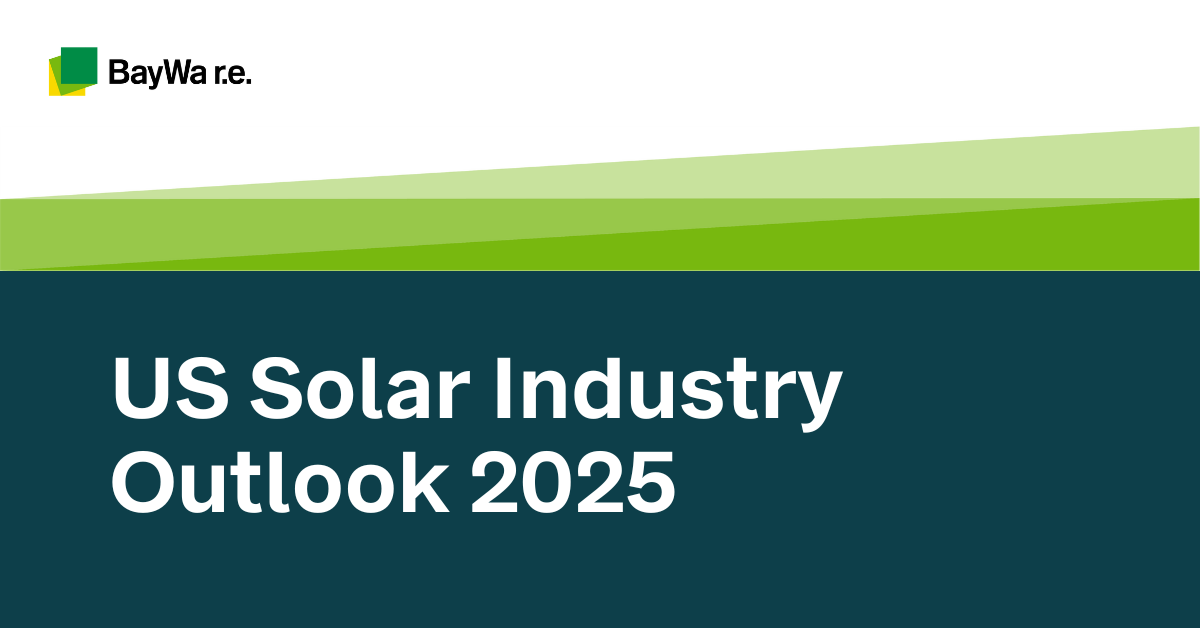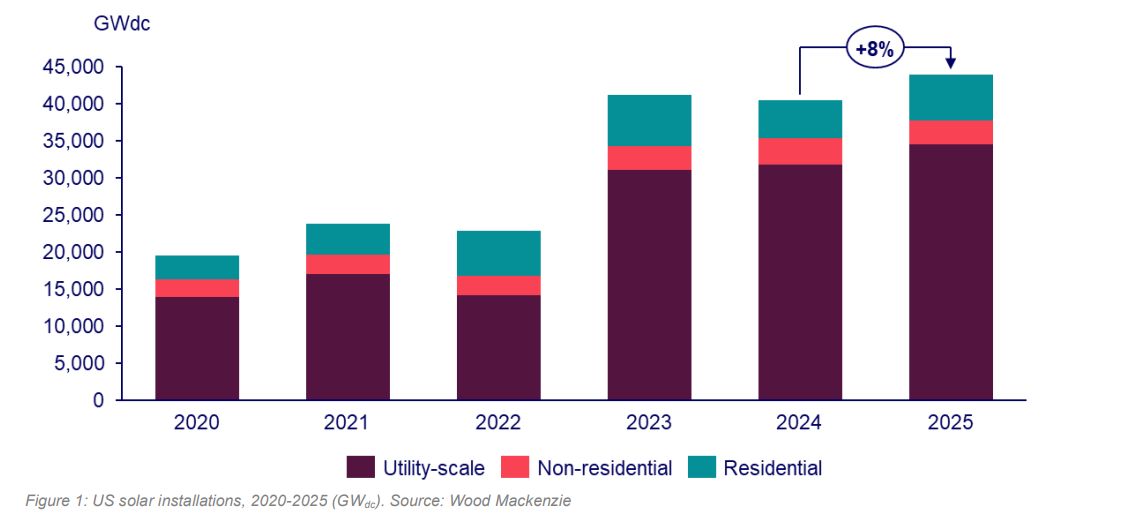
Through it all, however, it seems nothing can stop the PV industry from powering full—emission-free—steam ahead into the second half of the Solar+ decade. Now more than ever, it is apparent the increasingly resilient solar and storage industry will continue to adapt and meet the growing demand for renewable energy systems nationwide, no matter the setbacks.
So, to keep your PV business on track and ahead of the competition right now and for years to come, this article outlines four key solar industry trends to keep an eye on in 2025.
What Solar Energy Businesses Can Expect in 2025
If you would like to hear an expert discussion about the year ahead in solar, the most recent episode of the Power Forward podcast is an incredibly informative listen. On the other hand, if you are pressed for time, no problem. Here are four important themes almost guaranteed to permeate the US solar industry in 2025.
1 | Additional Revenue Streams
First it was solar. Then it was solar and storage. Now it’s solar, storage, EV chargers, energy-efficiency upgrades, smart home systems, and more.
Over the last few years, installers everywhere have diversified their business offerings into non-PV product lines, with many solar consultants now doubling as whole home electrification experts to generate additional income. In 2025, these opportunities should continue to increase alongside steadily growing EV adoption rates and sustained national interest in residential and commercial energy-efficiency upgrades.
After years and years of solar capacity growth in the US, revamping and repowering existing installations may also be a surprisingly fruitful revenue stream for PV businesses in 2025. Whether you are retrofitting batteries for your own happy customers or providing some much-needed O&M on orphaned systems, next year is sure to deliver opportunities for additional revenue within the growing pool of people and organizations with existing solar installations.

2 | More Energy Security Conversations
Since the dawn of grid-tied PV systems, saving money on utility bills has been the key value proposition presented to most property owners by solar sales representatives. As time-of-use and net metering policies evolve, however, this conversation is becoming less and less relevant, with fewer lifetime savings projected for grid-tied PV system owners across several states and utility service areas today.
For this reason, some solar sales personnel may find more success in discussing energy security, rather than cost savings this year, though these two value propositions can go hand-in-hand. Simply put, homeowners can now “replace” utility electricity with self-generated power from a solar and storage system, rather than hope to “save” money on energy bills alone.
Therefore, solar batteries can help increase residential energy security in two distinct ways: With access to self-generated power during local outages and financially around changing billing policies. In the same sense, energy security talks will continue to contribute to C&I solar conversations in 2025, with increased national interest in microgrids supporting resilient energy systems for businesses, communities, essential services, and more.
3 | Say Goodbye to Oversupply in the US
Global module oversupply was one of the biggest PV industry trends in 2024, which lowered prices and shrank margins for solar companies everywhere. However, the days of PV oversupply may be numbered here in the US, as tariffs roll out and higher standards for best practices are implemented across the industry.
As BayWa re. Solar Distribution Vice President of Product Strategy, David Dunlap shared in the December 2024 Power Forward podcast episode, “Within certainly the first half of next year, if not the first quarter, the lion’s share of the excess and oversupply is gone.”
He continues, “There is some inventory here in the US that still needs to be consumed and installed, but that landscape is shifting toward more of an equilibrium and a narrower overall price range on PV.”
Watch the full Power Forward Podcast episode on YouTube.
While other experts agree that the depleting oversupply of US PV modules will likely lead to higher prices in 2025, this is not necessarily a bad thing for the domestic solar industry. With more of a seller’s market ahead, equilibrium in US PV supply and demand can help manufacturers turn profits, stay in business, and strengthen the national renewable energy industry.
4 | Boost in Domestic PV Manufacturing
Perhaps more than anything else, the steady investments in domestic PV manufacturing over the last few years are sure to shape the US solar industry in 2025. While a national energy emergency declared by the White House in January has some skeptics worried about the future of photovoltaics, it is tough to imagine the sun will go down on domestic PV manufacturing anytime soon, so long as it creates jobs and helps fortify the US as an international energy leader.
Today, PV solar is bipartisan and widely regarded as “good business,” especially when considering its levelized costs are substantially lower than fossil fuels. And while federal incentives helped quadruple US solar panel manufacturing rates between 2022 and 2024, the potential rollback on these incentives may become less of a threat as the industry reaches cost-parity against other forms of energy, even without government programs.
Critically, it is vital to remember that US solar grew by 128% during President Trump’s first term, and with so many top-tier brands like JA Solar, Qcells, and Trina already invested so heavily in domestic PV manufacturing, the industry’s momentum is seemingly unstoppable in 2025.
Final Thoughts
At the end of the day, change can sometimes seem like the only true constant in the global solar industry besides the sun’s predictable path through the sky.
So while 2025 may bring continued consolidation and change in the US solar landscape, the evolving industry continues to mature and push out bad actors with increased levels of policy and oversight governing solar sales practices, product sourcing, and more. Looking ahead, organizations who can track and adapt to PV industry trends will undoubtedly be the ones to both survive 2025 and thrive through the end of the decade and beyond.
Stay up to date on all of the latest solar news.
BayWa r.e. Solar Distribution supplies residential and commercial solar installers in the United States with quality solar + storage components, forecasting, business planning advice, and a community of experts. Visit www.solar-distribution.com to engage with our team, read our industry insights articles, and stream our Solar Tech Talk podcasts and recorded webinars on YouTube and Spotify. Follow us on LinkedIn and Facebook to stay connected. Ask us about our Financing Program and use our industry-leading Webstore to save time, get gear shipped, and get jobs done!
Part of the BayWa r.e. Global family of renewable energy companies.




